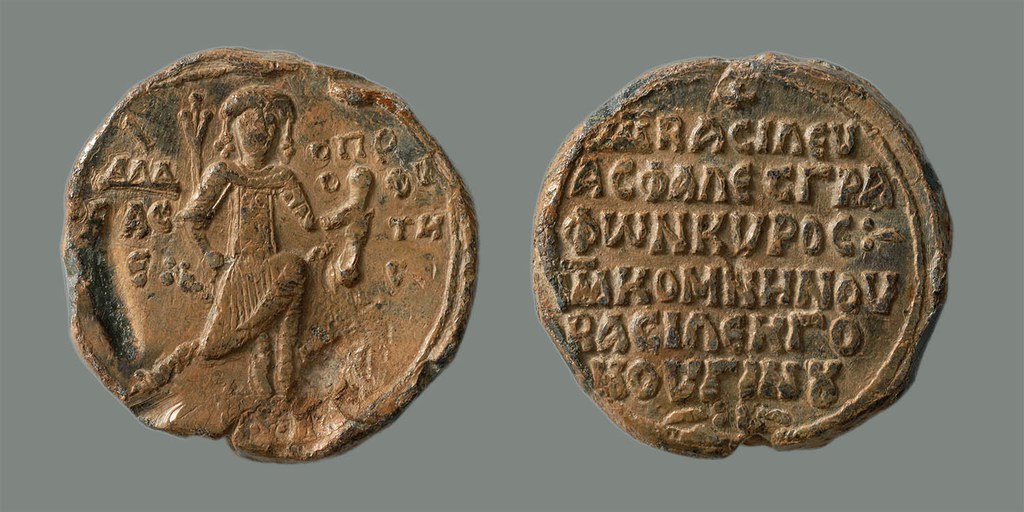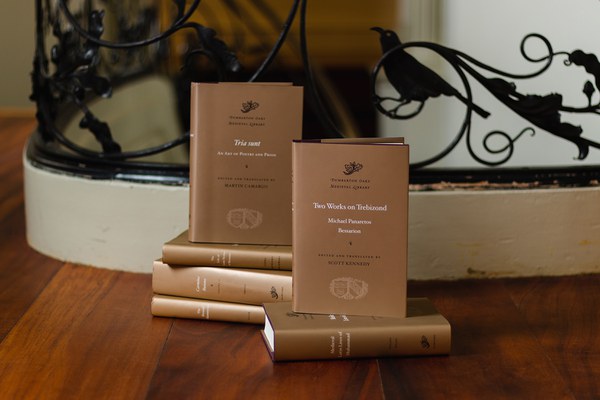The mysterious and gilded Empire of Trebizond has for centuries cast a spell on observers. Cervantes called up the city and its emperors in the same breath as serpents, monsters, swashbuckling women, and “enchantments of every kind” as examples of the exotic and fantastical fare to be found in the chivalric tales deluding his hero Don Quixote—equal parts impossibility and allure. The capital city of a Byzantine successor state founded after the sack of Constantinople in 1204, Trebizond (modern Trabzon in Turkey) sits on the southern coast of the Black Sea and was a trading center on the medieval Silk Road.
Trebizond’s mystique, both in Cervantes’s time and now, lies partly in the lure of the unknown, enhanced by the scarcity of surviving works by Trapezuntine authors. Most of what we know about the empire’s history comes from two sources: a short chronicle of the ruling dynasty attributed to Michael Panaretos (fl. 1349–1390), the emperor’s personal secretary, and a highly rhetorical panegyric in praise of the city by the influential cardinal and philosopher Bessarion (ca. 1403–1472). Former junior fellow Scott Kennedy (2017–2018), now an assistant professor at Bilkent University in Ankara, Turkey, has translated both these sources into English in Two Works on Trebizond (Harvard University Press, 2019), a new volume in the Dumbarton Oaks Medieval Library series.

Panaretos’s chronicle reveals closeup details of Trebizond’s political and military history; he has provided an invaluable account—often the only one available to us—of events from the founding of the city up to his own day. He records enemy attacks, sea battles, plagues, and above all the military movements and dynastic alliances of the city’s rulers with neighboring allies and rivals: a true court record, as Kennedy suggests, of the emperors’ connections and conflicts with both subjects and nearby peoples like the Turks and Georgians.
If Panaretos has painstakingly chronicled the city’s international relations, Bessarion contextualizes his native Trebizond’s special character as a mercantile center and the cultural successor of classical Athens. “We become wiser and better” than other cities, he writes, “because we collect what is best from everywhere, selecting what is useful and trading in every kind of knowledge.” Bessarion’s Trebizond is a city that never sleeps and its marketplace “an entire thriving city in and of itself,” prowled by sailors, tradesmen, vendors, and medieval mall rats who “practically live in the market.” With the medieval rhetorician’s love of the humblebrag, he admits he “would not say that Trebizond is at the center of an Attica or a Greece,” hearkening back to the great classical civilizations so admired by his contemporaries. “Instead, I would say it lies at the center of a vast expanse of Asia, so to speak, as well as of the peoples and cities of Asia. . . . It is as if they form a bodyguard around us or swirl around us in a harmonious dance, as if in a circle. They crown us with their virtues and the goods that each of their lands produces.”
Trebizond’s greatness did not lie in its gardens, its church “shimmering with beautiful paintings,” its royal palace (described in detail by Bessarion, in our only surviving medieval account of its appearance), or its formidable city walls “pierced by all sorts of gates and posterns” and insufficient to contain the sprawling residential neighborhoods of a thriving population. Instead, both Bessarion and Panaretos identify greatness as the result of cosmopolitan connections with the wider medieval world, of forging political alliances and importing all the best in culture, learning, and exotic luxury goods. These views of a great medieval urban center challenge modern stereotypes about the past and illuminate how an otherwise enigmatic imperial power envisioned itself on the world stage.
Buy Two Works on Trebizond and browse other DOML volumes at domedieval.org.
Explore the pictured seal of Trebizond’s cofounder and thousands of others in our Online Catalogue of Byzantine Seals.
Nicole Eddy is managing editor of the Dumbarton Oaks Medieval Library.

